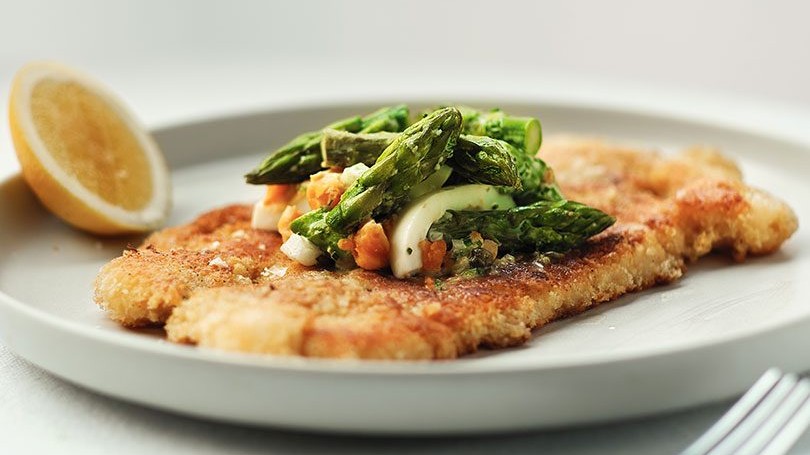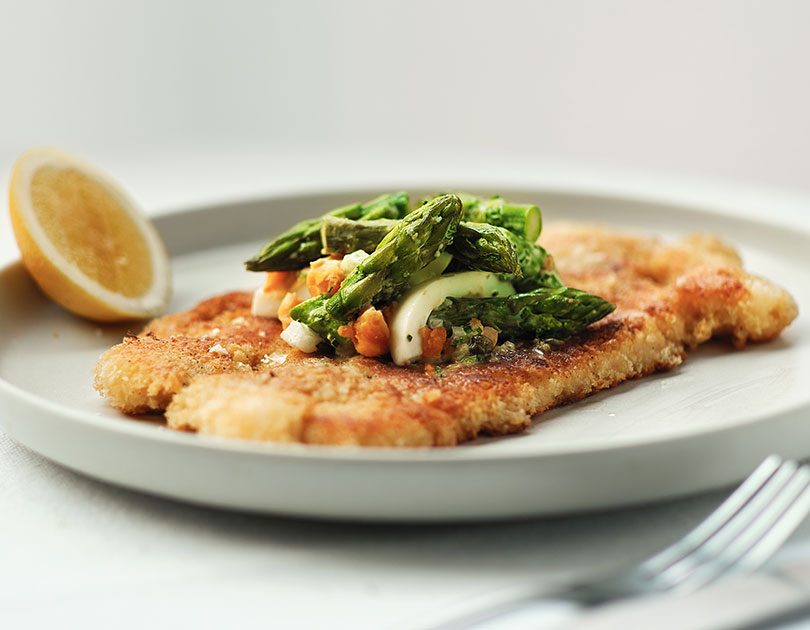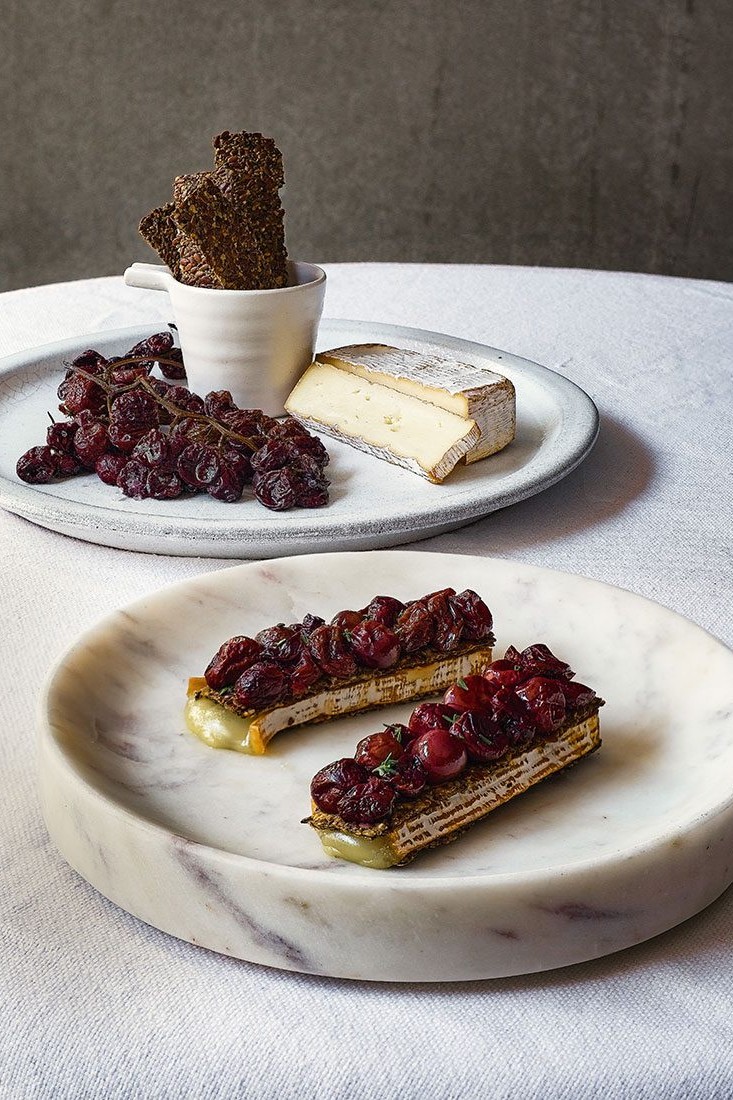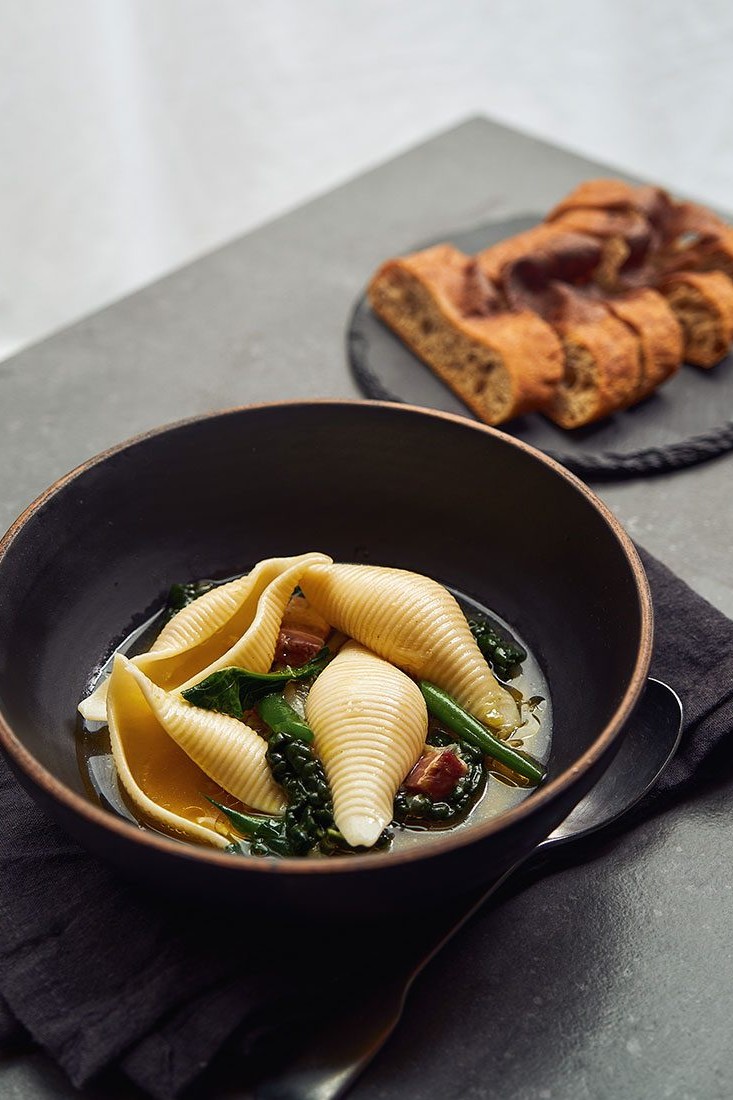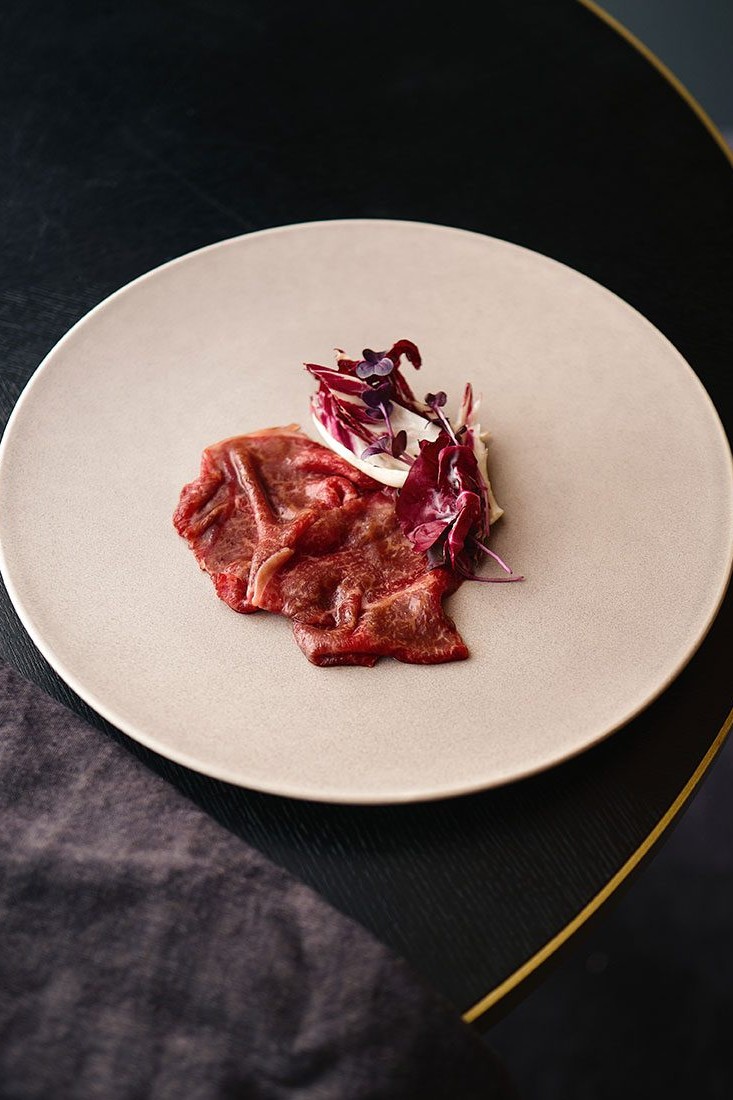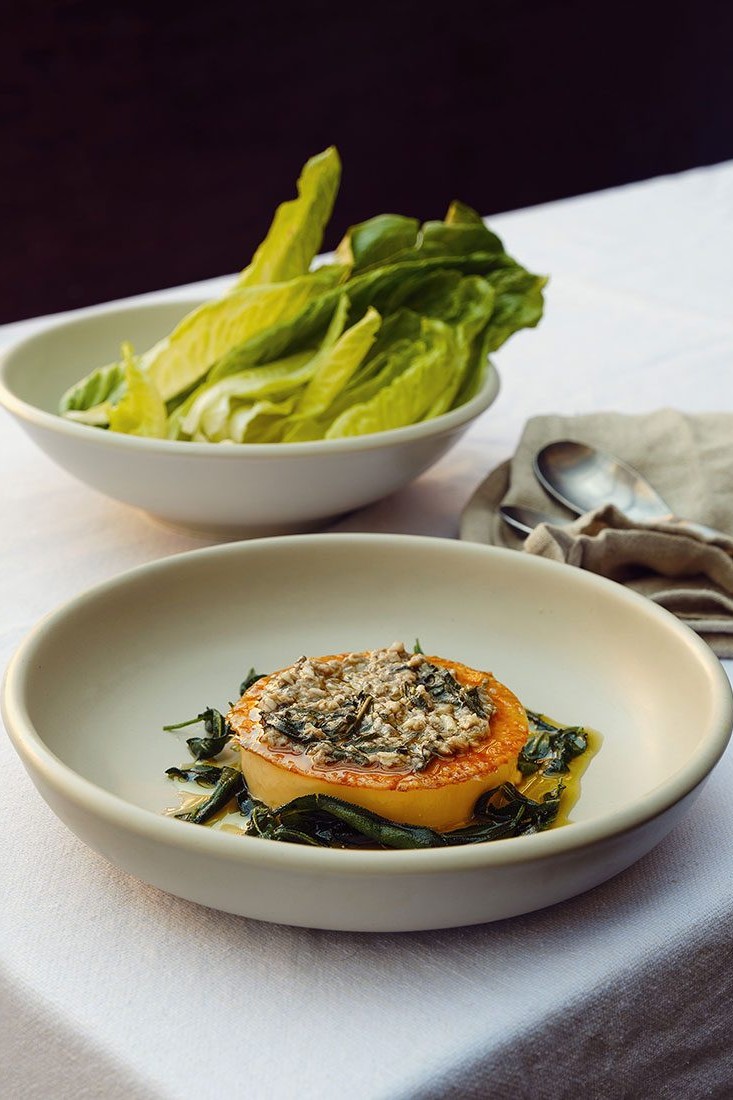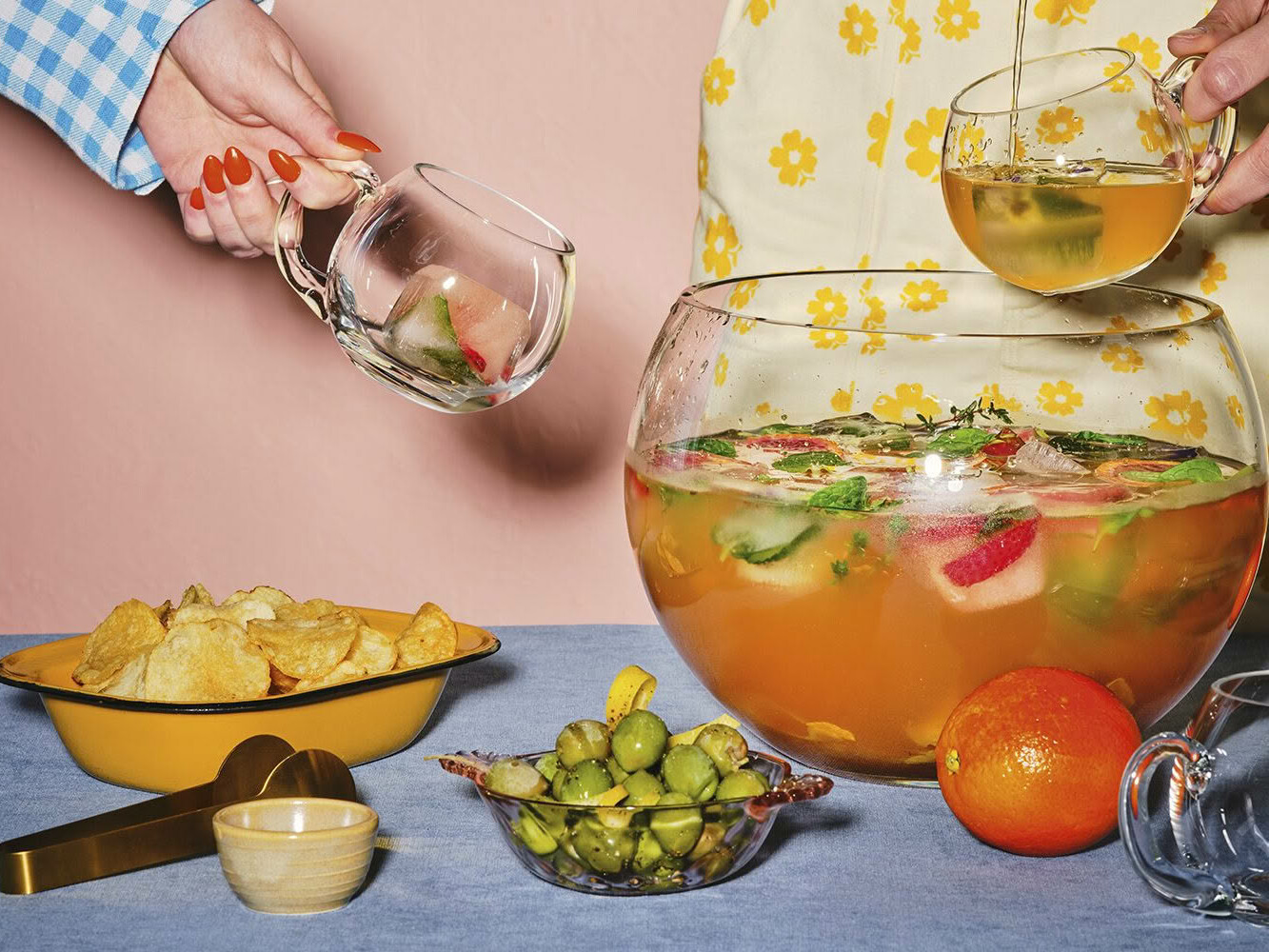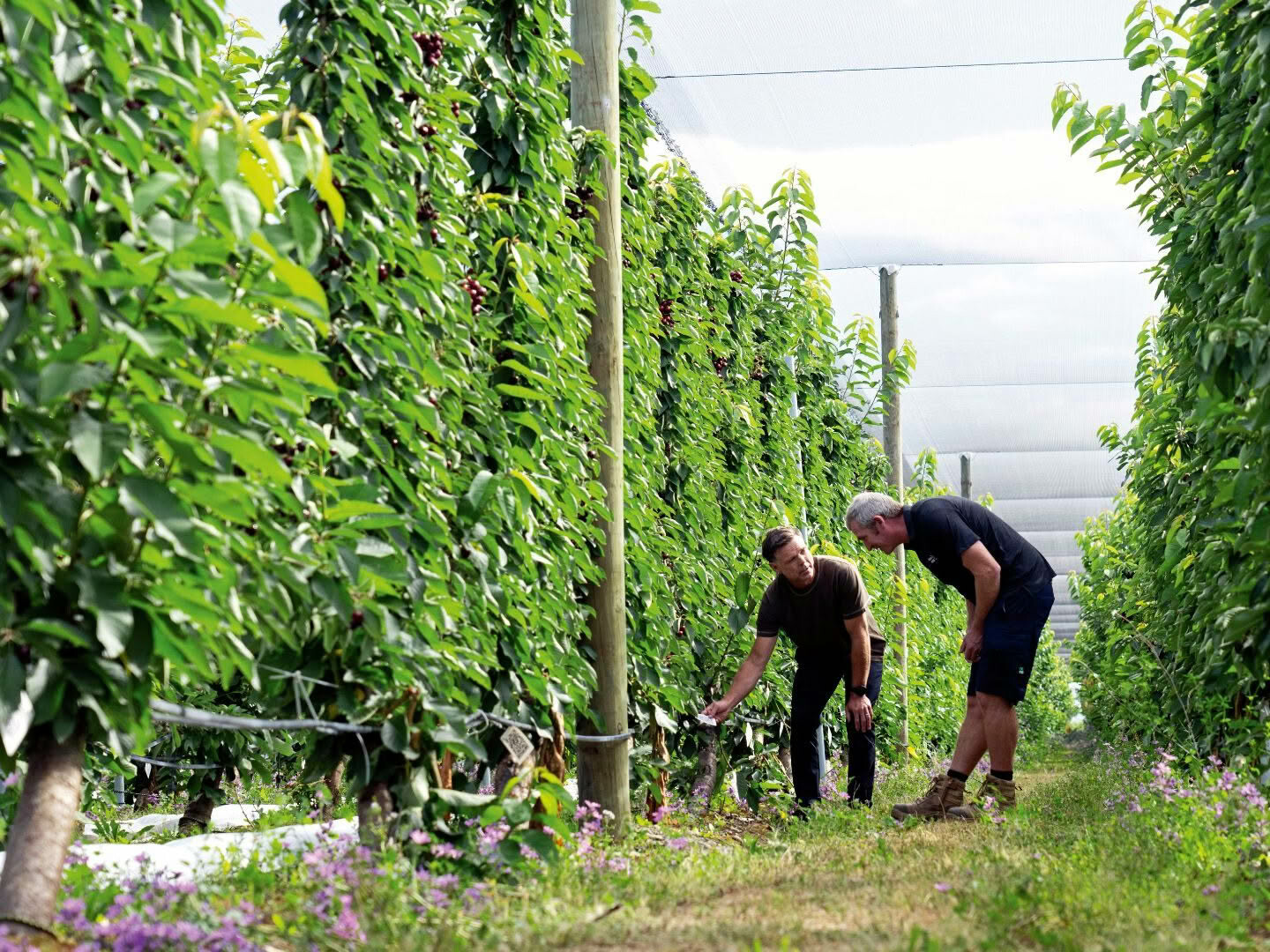Make your own aromatic flavoured oils, discover Berbere spice, enjoy an abundance of asparagus and see our new feature giving winner dinners with veges – all great ideas from David Neville.
THERE’S LOTS OF . . . ASPARAGUS
Asparagus is the poster child of spring produce. Spring heralds the arrival of many new vegetables, with artichokes, peas and zucchini, so how did asparagus claw its way to the top? I suspect it’s because it’s svelte and easy. I’m not advocating getting lazy with your cooking, but having a path of least resistance is its own blessing.
GIVE THESE A GO…
Grilled asparagus with orange sabayon
In a heatproof bowl, combine 3 large egg yolks, 100ml of your preferred stock, the zest of 1 orange, the juice of 2 oranges and a pinch of salt. Whisk until well combined. Set the bowl over a pot of simmering water, ensuring that the bottom of the bowl does not touch the water. Whisk continuously for 5-6 minutes until it thickens and reaches a ribbon-like consistency (when you lift the whisk the sauce should fall slowly forming a ribbon that will hold its shape on the surface of the sauce for a few minutes). Set aside. Trim the ends from 500g asparagus spears. Blanch the asparagus in salted, simmering water for 2 minutes then dry thoroughly with a kitchen towel. Place the asparagus in the centre of a large plate and spoon over the sabayon. Serve immediately as a side to whole roast chicken or beef.
Parsley spaghetti with asparagus
Cook 200g spaghetti according to the package instructions until it is al dente. Reserve a cup of pasta water before draining the pasta. While the spaghetti is cooking, trim the woody ends from 200g asparagus stalks and cut the spears into bite-sized pieces. In a separate pan, melt 2 tablespoons butter over a medium heat. Add the asparagus and 2 minced garlic cloves. Sauté for 3-4 minutes until the asparagus is tender, then add ¼ cup finely chopped fresh parsley leaves and stir well. Add the cooked spaghetti to the pan with the asparagus. Toss everything to combine. Sprinkle 2 tablespoons grated parmesan over the spaghetti and squeeze over the juice of ¼ lemon. Season with salt and pepper to taste. Stir in 4-5 tablespoons of the reserved pasta water to form a silky sauce.
Grilled asparagus with wakame butter
Melt 50g unsalted butter in a small saucepan over a low heat. Meanwhile, soak 2 tablespoons dried wakame seaweed in warm water for a few minutes until it softens. Drain the seaweed and chop finely. Add the chopped wakame to the melted butter and cook for a minute for the flavours to infuse. Set aside. Trim the woody ends off 500g asparagus spears and drizzle with olive oil. Season with salt and pepper and toss to coat evenly. Place the asparagus on the grill and cook for 3-4 minutes per side until slightly charred and tender. Transfer to a serving platter. While the asparagus is still hot, drizzle over the wakame butter.
Dill pickled asparagus
Thoroughly clean a 1-litre preserving jar and lid. Trim the woody ends from 600g asparagus, wash the spears carefully under water, shake dry and put into the jar. Put 2 cups each of white wine vinegar and water, 2 tablespoons each of salt and caster sugar, 2 garlic cloves, 1 teaspoon each of dill seeds and cracked black pepper into a pan and bring to a boil. Remove from the heat until off the boil and carefully pour over asparagus until submerged. Fasten the lid and allow it to cool to room temperature before storing it in the fridge. Allow to pickle for one week before use. Ideal in potato salad.
PLANT POWER
The world is on a long, slow march to vegetarianism; it just doesn’t know it yet. This statement frightens me, not because I don’t like vegetables, but more because I’ve come to rely on meat as an automatic feature of my meals, and this is a problem I want to solve. Everything is a learned skill and cooking without meat is no different. Rather than ask, “What will I do?” I want to ask, “What can I do?”.
Analysing the challenge, meat brings savoury and fatty qualities to meals, so if we remove these, we have to replace them with something else.
THE NEXT BIG THING / BERBERE SPICE
Ethiopian cuisine has been appearing on my radar for the last year. There is much to say about its heart, but I’ll focus on what is its soul. Berbere spice is immensely complex and I suspect each household has its own variation. I suggest buying it pre-made, as it has a long laundry list of ingredients. When I tried Berbere, it reminded me of southern Indian spices, ras el hanout and Caribbean spices. It reminds me of them, but it’s also distinct and different. This dish is the first one I’ve made in months that made me slightly sad when it was all gone.
GIVE THESE A GO…
Berbere-spiced kūmara fries
Heat the oven to 220°C. Line a baking sheet with baking paper. Peel 2 large kūmara and cut them into evenly sized fries, about 1 cm thick. In a large bowl, combine the kūmara fries with a dash of olive oil, 1 tablespoon Berbere spice blend and some salt and toss well to coat evenly. Arrange in a single layer on the baking sheet, ensuring they are not crowded, which will help them crisp up. Bake for about 20-25 minutes, flipping them halfway through until they are golden brown and crispy. Serve immediately as a snack with dipping sauces.
Berbere pork ribs
Heat the oven to 160°C. Rub 1kg pork ribs with 2 tablespoons Berbere spice blend, making sure that they are coated evenly. Mix 2 tablespoons olive oil and 1 tablespoon each of honey and soy sauce in a separate bowl. Drizzle the mixture over the spiced pork ribs and season with some salt and pepper to taste. Put the ribs on a baking tray and cover with foil. Roast for approximately 2 hours or until the meat is tender and cooked. Once cooked, remove the foil and increase the oven temperature to 220°C. Return the ribs to the oven and cook for 10-15 minutes more or until they develop a crispy exterior. Remove from the oven and allow them to rest for a few minutes before serving.
Berbere-spiced spring slaw
Combine 300g shredded cabbage, 100g grated carrots, 100g sliced radishes and 1 thinly sliced red onion in a large mixing bowl. In a separate bowl, whisk together 4 tablespoons mayonnaise, 2 tablespoons Greek yoghurt, 1 tablespoon Berbere spice blend and the juice of ½ lemon. Pour the dressing over the vegetables. Toss everything to ensure the vegetables are coated evenly with the dressing. Cover the bowl and refrigerate the coleslaw for at least 30 minutes to allow the flavours to meld together. After chilling, give the coleslaw a final toss and adjust the seasoning if needed, adding salt, pepper, or lemon juice to taste.
Berbere-infused olive oil
Heat 2 cups olive oil in a small pot until it’s as hot as a cup of tea. Add 1½ tablespoons Berbere spice mix and stir through the oil. Remove from the heat and allow to cool to room temperature. Store in a clean bottle in a dark cupboard. Ideal for sautéing vegetables.
Berbere yoghurt dip
In a small bowl, combine 1 cup plain yoghurt, 1 tablespoon Berbere spice blend, 1 tablespoon lemon juice, 3 tablespoons olive oil, a pinch of salt and 1 small clove garlic, minced. Stir well. Taste and add more salt if desired. Add extra Berbere spice for a spicier flavour. Cover the bowl and refrigerate for at least 1 hour to allow the flavours to meld together. After chilling, stir the dip quickly before serving and garnish with coriander leaves. Ideal with pita bread.
MAKE IT YOURSELF / FLAVOURED OILS
Oil is just oil, right? If you agree, shame on you. Different oils have different properties, some are neutral, some are aromatic and others have a glowing hue. The objective of flavoured oils is to enhance the existing good qualities and add a new dimension to their use.
GIVE THESE A GO…
Pine needle & lemon oil
Add 50g each Douglas fir or Monterey pine needles and curly parsley fronds to a tall blender with the zest of 1 lemon. Add 200ml light olive oil and blend for 5 minutes on medium until the oil is light green and the herbs are entirely blitzed. Transfer to a medium-sized pot and heat to 100°C. Strain through a coffee filter. Cool and store in a clean jar in the fridge for up to 2 weeks. Ideal for basting fatty red meats.
Cook’s note: Substitute rosemary for pine if preferred.
Dill & fennel seed oil
Heat a small pan over a medium heat and toast 2 tablespoons dill seeds and 1 tablespoon fennel seeds for 2-3 minutes, until aromatic. Remove from the heat, gently crush seeds with the back of a spoon and cover with 1 cup vegetable oil. Return to the heat and gently fry the seeds in the oil for 2-3 minutes. Remove from the heat and cool. Pour into a clean jar and let it sit for 24 hours, shaking occasionally. Strain into a clean jar and store for up to 2 weeks in the fridge.
Rosemary & allspice oil
Place 1 cup grapeseed oil into a small frying pan and heat over a moderate heat until it reaches 115°C. Remove from the heat and add 1 teaspoon ground allspice and ¼ cup fresh rosemary leaves. Swirl the pan gently to submerge the spice and rosemary and allow to cool to room temperature. Put into a clean jar and let it sit for 24 hours, shaking occasionally. Strain into a clean jar and store in the fridge for up to 2 weeks. Ideal in marinades or to replace neutral oil in mayonnaise.
Chilli oil
Put 2 teaspoons dried chilli flakes, 1 teaspoon smoked paprika and ½ teaspoon Sichuan peppercorns into a heatproof bowl. Heat 1 cup neutral oil to 115°C and pour over the spices so they fry, stirring well. Add 1 teaspoon dark sesame oil. Cool to room temperature. Store in a clean jar in the fridge for up to 2 weeks.
Sage & hibiscus oil
Heat 1½ cups olive oil in a small saucepan over a low heat. Add 1½ tablespoons dried sage and ¼ cup dried hibiscus petals to the oil and stir gently to combine. Simmer on a low heat for 3 minutes, stirring occasionally. Remove from the heat and cool completely. Strain through a fine-mesh sieve into a clean jar. Store in the fridge for up to 2 weeks. Ideal as a dipping oil for bread.

